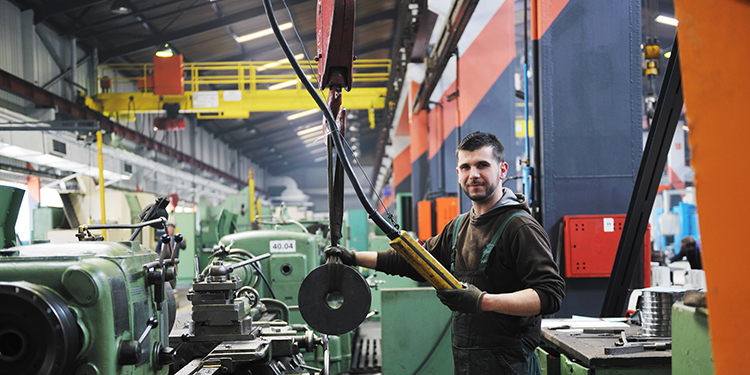Approaching Ergonomic Solutions For Manufacturing As A Complete System

When it comes to addressing ergonomic needs in a manufacturing environment, rarely does a single piece of equipment solve all of the needs of the worker. This is especially true when considering the entire flow of material handling — from receipt of material to production to shipping the product. Since these activities involve a wide range of movement, it may take a wide variety of equipment to effectively address ergonomic challenges. Additionally, during many activities it may take various components working in tandem to provide the optimal solution that takes the strain off the worker.
As product is received in the warehouse, it is typical for workers to manually handle goods, leading to actions such as bending, lifting, and turning as part of the process. Many companies have turned to equipment such as pallet lifters to keep loads at ideal levels that are more natural for workers and reduce the need for bending for each package. Most of these lifters also rotate and tilt to further reduce physical strains caused by twisting or reaching.
Especially for small parts or packages, one of the most efficient ways to move items throughout facilities is with carts, dollies, mobile bins, or similar wheeled equipment. For the most impactful ergonomic benefits, these items can be outfitted with the latest wheels and casters designed with extremely low rolling resistance. This allows workers to effectively move goods with minimal force, thus reducing strain throughout the activity.
Once parts reach the production cell, one of the most common integrated ergonomic systems consists of a lightweight crane with hoist or intelligent lifting device and a lift table. Many cranes feature an enclosed track with a trolley that runs inside the track. This allows the user to move the product effortlessly, with many cranes designed such that only a single pound of force is needed move 100 pounds. The lifting device is used to precisely maneuver and position the goods prior to work being performed, while lift tables may also be used to keep the items at optimal heights for the worker’s task. Lift tables may also be used to “feed” the goods to the crane operator at the outset of the application, eliminating the need to bend or reach to attach the load to the lifting device.
In addition to ergonomic equipment working together as a complete system in the production cell, various types of workstations may be used for the final processing of data or paperwork as the order is prepared for shipment. This could include padded mats to ease strain when standing, tables or desks that may be adjusted based on the height of the worker, and chairs that are fully adjustable based on the needs of the worker. Many of these workstations also feature fully adjustable computer stands that may be modified throughout the day to reduce strain on certain parts of the body.
Therefore, when addressing ergonomic needs throughout a manufacturing operation, consider all the options. While some ergonomic issues can be resolved with stand-alone equipment, most require a mix of products developed with ergonomics at the forefront.
Looking for more ways to improve the ergonomics of your workforce? The members of the Ergonomic Assist Systems & Equipment (EASE) Industry Group of MHI offer a variety of checklists for free download, here.



